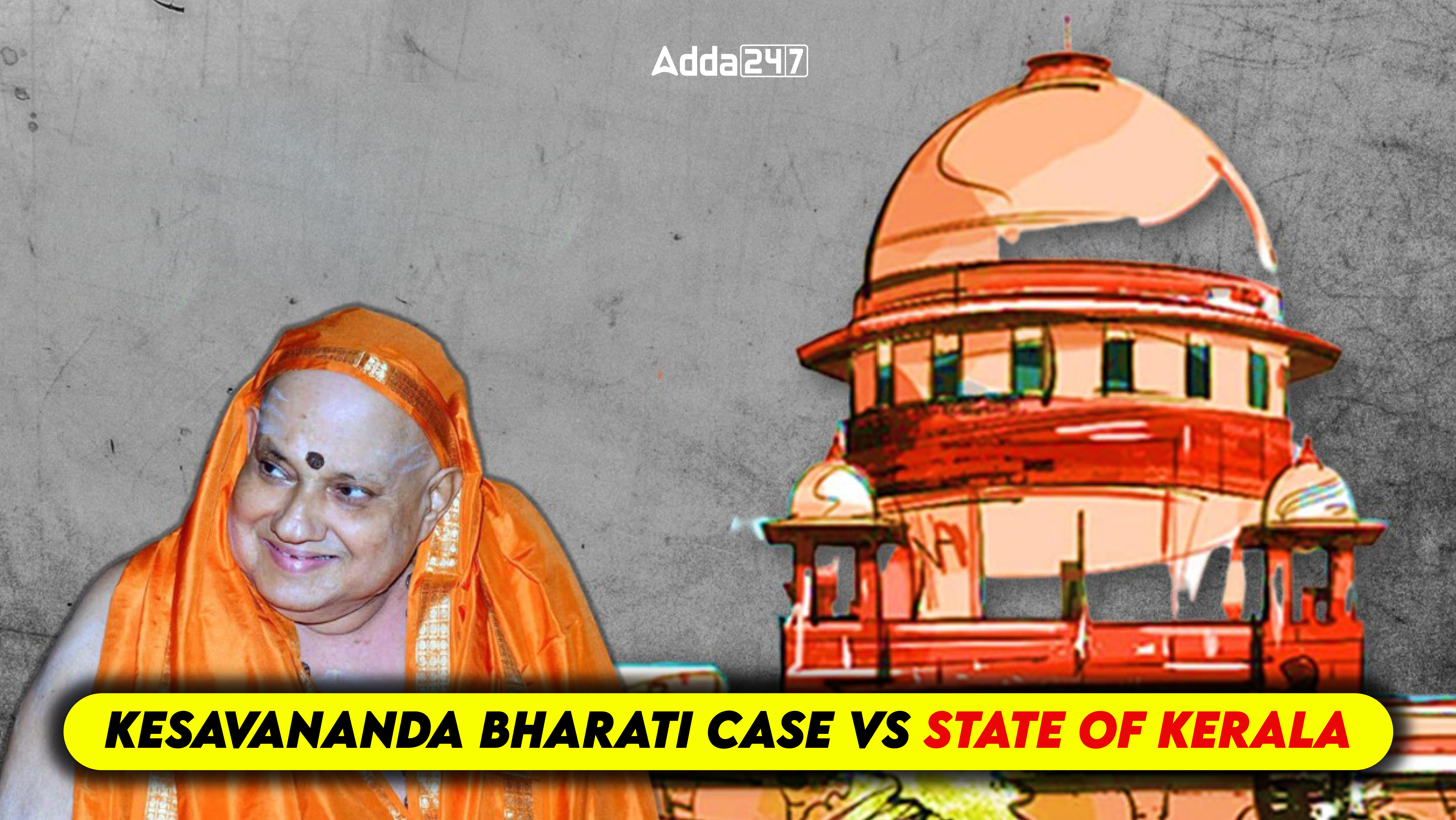Table of Contents
The Kesavananda Bharati case, officially known as Kesavananda Bharati Sripadagalvaru and Ors vs State of Kerala, is a key moment in India’s constitutional history. In 1973, the Supreme Court delivered a judgment that established the Basic Structure Doctrine. This important principle helps protect the Indian Constitution from misuse by the legislature.
Kesavananda Bharati Case vs State of Kerala
Kesavananda Bharati, the chief pontiff of Edneer Mutt in Kerala, challenged the Kerala Land Reforms legislation in 1970. This legislation imposed restrictions on the management of religious properties, which Bharati contended infringed upon his Constitutional rights. He argued that these restrictions violated Articles 25, 26, 14, 19(1)(f), and 31 of the Indian Constitution, which guarantee the right to practice and propagate religion, manage religious affairs, equality before the law, freedom to acquire property, and protection from compulsory acquisition of property, respectively.
The case’s complexity and its potential impact on the Constitution led the Supreme Court to constitute a 13-judge bench, the largest in its history, to hear the matter.
Issues before the Court:
- The constitutional validity of the 24th Constitutional Amendment Act, 1971.
- The constitutional validity of the 25th Constitutional Amendment Act, 1972.
- The extent of Parliament’s power to amend the Constitution.
- Whether Parliament’s power to amend the Constitution is unlimited, including whether it can alter, amend, or abrogate any part of the Constitution to the extent of taking away all fundamental rights.
Contentions of Parties
Specifically, the petitioners challenged the validity of the 24th, 25th, and 29th Constitutional Amendments. They argued that these amendments were an overreach and violated the Fundamental Rights enshrined in the Constitution.
The petitioners, represented by the famous lawyer N.A. Palkhivala argued that Parliament can change the Constitution, but it cannot change its basic structure. This idea came from a previous case called Sajjan Singh vs State of Rajasthan.
On the other side, the respondents, represented by H.M. Seervai, said that Parliament’s power to amend the Constitution is very important for addressing social and economic issues. They believed that putting limits on this power would make it difficult for Parliament to govern effectively.
Court Verdict on Kesavananda Bharati Case
On April 24, 1973, after 68 days of intense hearings, the Supreme Court delivered a voluminous 703-page judgment. The decision was a narrow 7:6 majority, where the court held that –
- While the Parliament had wide-ranging powers to amend the Constitution, it could not alter its basic structure.
- This doctrine meant that any constitutional amendment could not change the core principles and values that form the Constitution’s foundation.
- The Court upheld the validity of the 24th Amendment entirely, while it found the first part of the 25th Amendment to be valid but declared the second part ultra vires.
- The judgment struck a balance between the need for Parliamentary Sovereignty and the protection of Fundamental Rights, ensuring that the Constitution’s essence remained intact.
Implications of the Basic Structure Doctrine
The Basic Structure Doctrine has had profound implications for Indian democracy. It established that while the Constitution could evolve, its core principles—such as the rule of law, separation of powers, and judicial review—must remain inviolable. This doctrine has since been invoked in numerous cases to prevent potential overreach by the Parliament.
For instance, the doctrine was pivotal during the Emergency period in India (1975-77), when attempts were made to curtail Judicial Independence and Fundamental Rights. The Kesavananda Bharati judgment ensured that such attempts could be thwarted, preserving the Constitution’s democratic ethos.



 TSPSC Group 1 Question Paper 2024, Downl...
TSPSC Group 1 Question Paper 2024, Downl...
 TSPSC Group 1 Answer key 2024 Out, Downl...
TSPSC Group 1 Answer key 2024 Out, Downl...
 UPSC Prelims 2024 Question Paper, Downlo...
UPSC Prelims 2024 Question Paper, Downlo...





